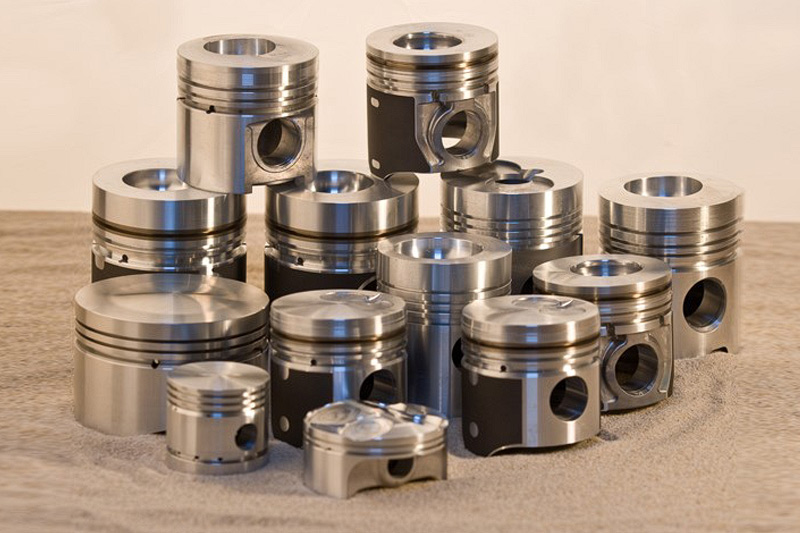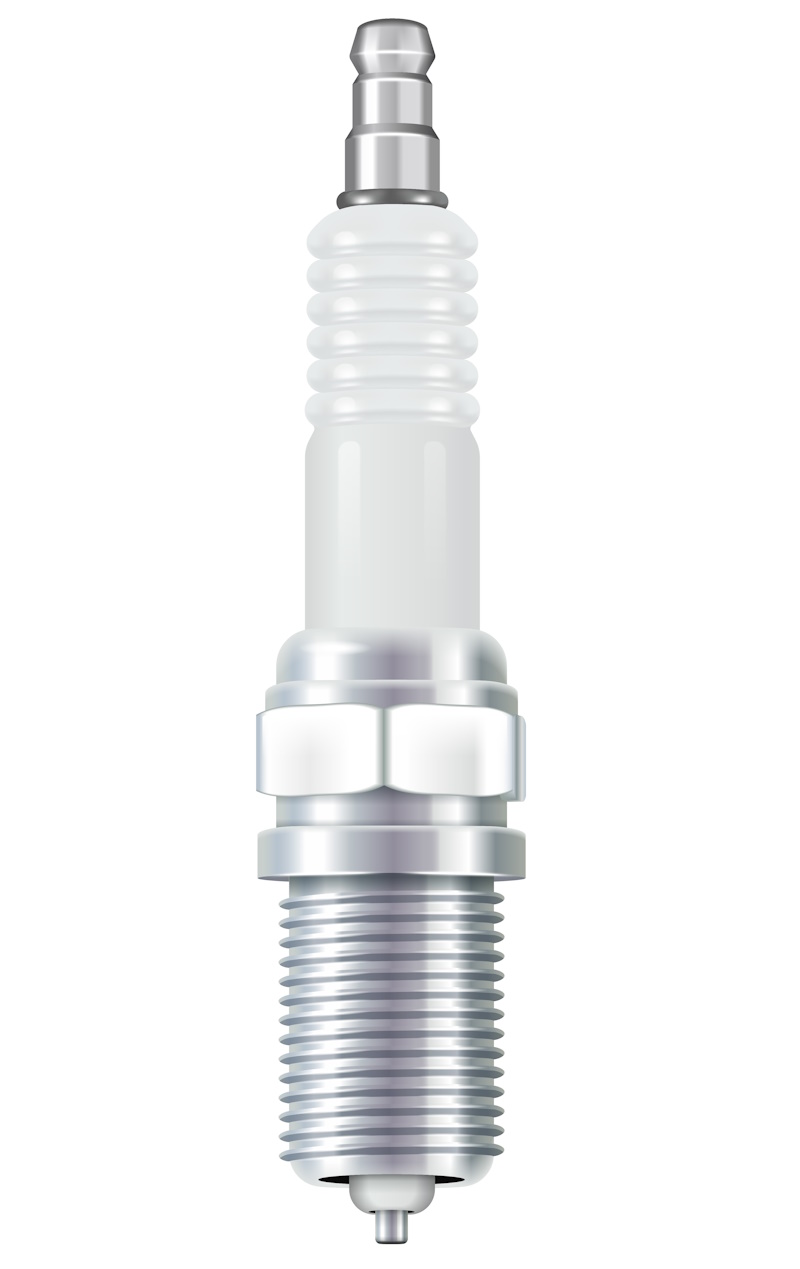Engine Bearings
Engine Bearings
Topics covered in the article:
- What are the functions of engine bearings?
- Types of bearings
- Symptoms of damaged bearings
- What does a spun bearing mean?
- How to select bearings for the crankshaft?
What are the functions of engine bearings?
Engine bearings are crucial components of the crankshaft-piston system in an internal combustion engine. Their main function is to facilitate the rotation of the crankshaft and connecting rods on the shaft. Engines contain both main bearings, located in the block, and rod bearings, located in the connecting rods. Bearings are situated between the connecting rod and the crank pin, as well as between the crank pin and the engine block. Their primary function is to reduce friction and provide adequate support for the crankshaft’s rotation during engine operation.
Engine bearings are a type of sliding bearing. Each individual bearing consists of two semi-circular half bearings. They are made from a steel strip and coated with a special bearing alloy that ensures sufficient strength and sliding properties.
Types of Bearings
Bearings are usually made from high-quality steel, and their surface is typically coated with a special bi-metal or multi-layer alloy, providing proper sliding properties and strength. Various types of bearings are available in the market, differing in construction and the materials used for their production:
- Traditional bearings: This is the classic type of bearing, widely used in many types of engines.
- Multi-layered – reinforced bearings: These have an additional layer, increasing their strength and load resistance.
- Multi-layered – reinforced “SPUTTER” bearings: These are advanced tri-component bearings, composed of different layers applied using special sputtering technology. This makes them harder and more resistant to wear, ideal for high-stress engines.
- Silver bearings: These are an alternative to “SPUTTER” bearings. Their sliding coating, based on silver, offers similar hardness and resistance properties, but they are a more affordable option.
- Polymer bearings: These use a modern combination of bronze or aluminum alloys, covered with a special polymer coating. They are highly resistant to wear and have good dry-running emergency properties, significantly reducing the risk of engine seizing.
Selecting the right bearings for an engine depends on the engine specifications, operating conditions, and expected durability and performance. Therefore, it is important to thoroughly understand the properties and applications of different types of bearings before making a choice.
Symptoms of Damaged Bearings
Damaged bearings in the crankshaft-piston system of an engine can manifest various symptoms indicating problems with this component. Here are some common symptoms of damaged bearings – as usual, some of these symptoms may occur without necessarily pointing directly to bearing damage – they can be misleading, and a definitive answer can only be provided by diagnostics performed by a specialist.
- Knocking: Damaged bearings often cause a characteristic noise – knocking or banging heard during engine operation. This noise can be particularly intense during changes in engine speed or under load.
- Vibrations: Damaged bearings can lead to additional vibrations in the engine, which may be felt in the vehicle cabin. These vibrations can be particularly noticeable during acceleration or braking.
- Loss of Power: Damaged bearings can cause a decrease in engine power. Problems with the bearings can lead to improper rotation of the crankshaft or connecting rods, affecting engine performance.
- Increased Oil Consumption: Damaged bearings can lead to increased engine oil consumption. Damage to the bearings can lead to improper sealing between the connecting rod and the crank pin, causing oil leaks.
- Engine Temperature: Damaged bearings can cause an increase in engine temperature. Improper rotation of the crankshaft or connecting rods caused by bearing damage can generate additional heat, leading to engine overheating.
- Low Oil Pressure: Damaged bearings can lead to a drop in oil pressure in the engine lubrication system. Insufficient lubrication can lead to further engine damage and increased wear.
- Engine Seizure: In extreme cases, damaged bearings can cause serious engine damage, leading to seizure or locking up.
If you suspect damaged bearings, it is important to consult with an experienced mechanic or engine specialist as soon as possible for a thorough diagnosis and appropriate repair actions. Ignoring a problem with the bearings can lead to more serious engine damage and costly repairs.
What Does a Spun Bearing Mean?
A common problem and recurring question is the issue of a spun bearing. A spun bearing refers to a situation where a bearing in the engine’s crankshaft-piston system is improperly installed, meaning it is rotated or flipped in contrast to its correct positioning.
Bearings in the engine’s crankshaft-piston system are components that provide appropriate support and rotation for the crankshaft and connecting rods. Correct installation of bearings is key to the proper functioning of the engine. Each bearing has a specific shape and way it should be mounted to ensure proper operation. A spun bearing means it has been installed incorrectly, for example, rotated around its axis or placed in the wrong position relative to the connecting rod and crank pin. Such installation errors can be a result of negligence during engine repair or incorrect assembly during installation.
Consequences of a spun bearing can be serious and lead to various problems in the engine, such as noise – improperly installed bearings can cause excessive friction and wear, shortening the engine’s lifespan. Incorrect rotation of the crankshaft can hinder piston movement in the cylinders and lead to a decrease in power, and ultimately, improper installation of a bearing can lead to additional damage to other components of the crankshaft-piston system, such as connecting rods or crank pins.
If you suspect a bearing has been spun, it is essential to immediately correct or replace it with the help of an experienced mechanic or engine specialist. Ignoring this problem can lead to more serious engine damage and increased repair costs.
How to Select Bearings for the Crankshaft?
Selecting the appropriate bearings for the crankshaft in an engine is crucial for providing proper support and minimizing friction in the crankshaft-piston system. Here are some steps to take when selecting bearings for the crankshaft:
- Accurate Measurements: Before selecting bearings, it is important to accurately measure the diameter of the crankshaft in several places to obtain precise dimensions. It is essential that the diameter of the bearing is compatible with the dimensions of the crankshaft.
- Checking Tolerances: It is also important to check the dimensional tolerances of the crankshaft specified by the engine manufacturer. Bearings should have the proper tolerance to ensure an ideal fit with the shaft.
- Material Type: Choose bearings made from high-quality materials such as carbon steel, chrome-molybdenum steel, aluminum, or aluminum alloy. The choice of material depends on the engine specifications and operating conditions.
- Bearing Size: Bearings must be appropriately sized to match the dimensions of the crankshaft. They are usually available in different sizes corresponding to various crankshaft dimensions.
- Bearing Type: There are several types of bearings, such as steel with coating, bi-metal, aluminum, etc. Select the appropriate type of bearings that best suits the engine specifications and operating conditions.
- Consulting the Service Manual: For engines from known manufacturers, it is advisable to check the service manual or spare parts catalog to ensure that the chosen bearings are in line with the manufacturer’s recommendations.
- Considering Operating Conditions: If the engine will operate in harsh conditions, such as high temperature or load, consider choosing bearings with higher durability or additional protective layers.
Selecting the right bearings for the crankshaft requires considering many factors, such as dimensions, tolerances, material, engine type, and operating conditions. In case of doubt, it is recommended to consult with an experienced mechanic or engine specialist.
Podobne wpisy

Engine Head
The Engine Head – Its Role The engine head is responsible for sealing the combustion chamber. It houses the timing […]

Pistons in the engine
In a motorized system, the crankshaft must rotate to convert combustion energy into mechanical energy. Here is the piston that […]

Spark/Ignition Plugs
A spark plug is a fundamental and one of the most important components of the ignition system. Its condition affects […]